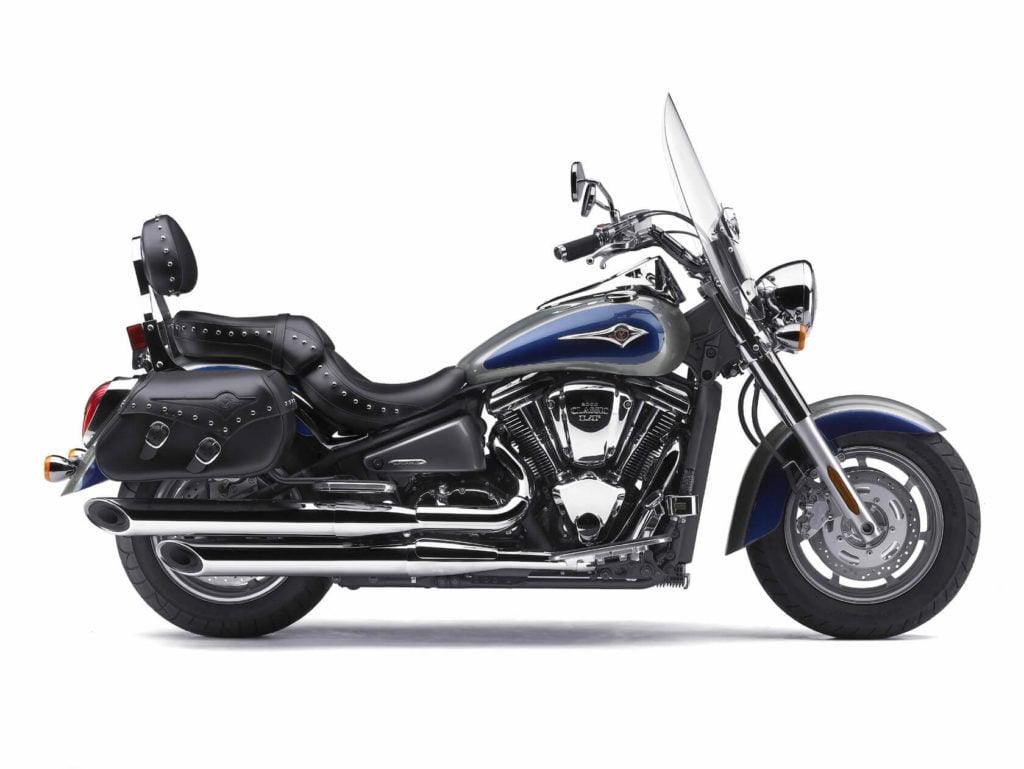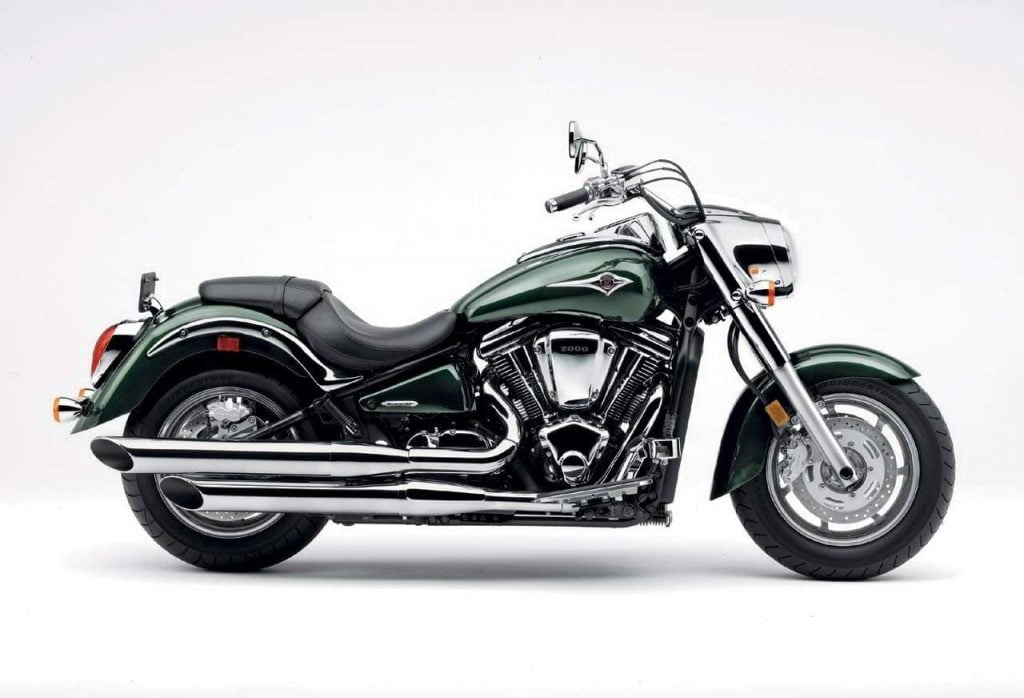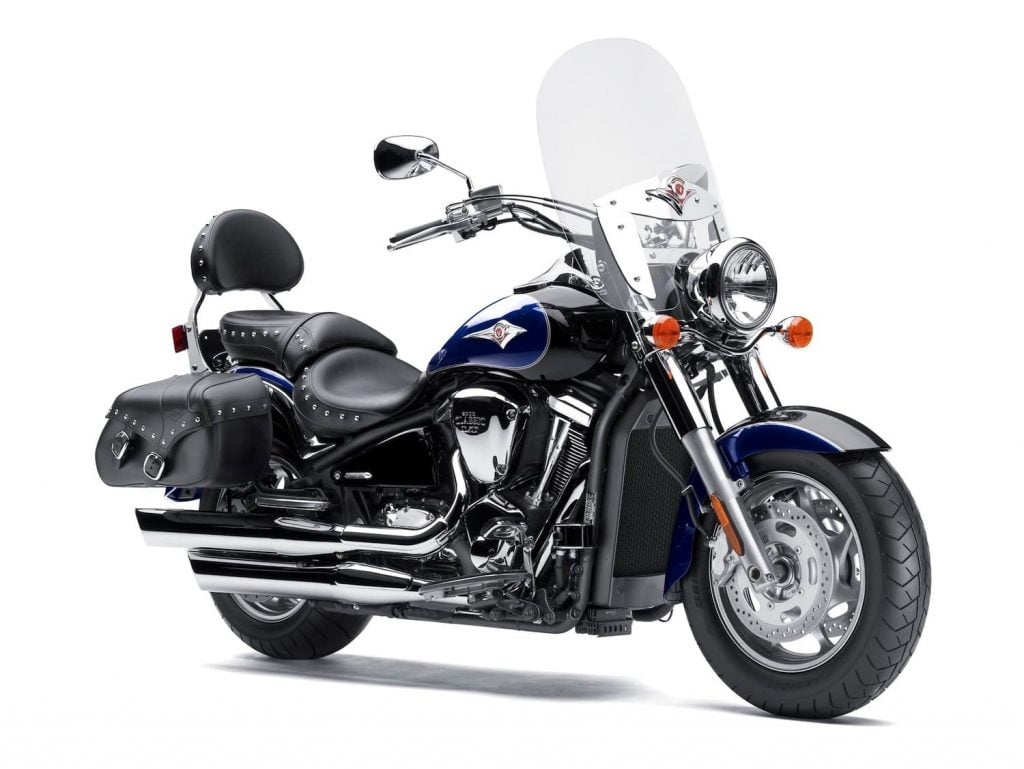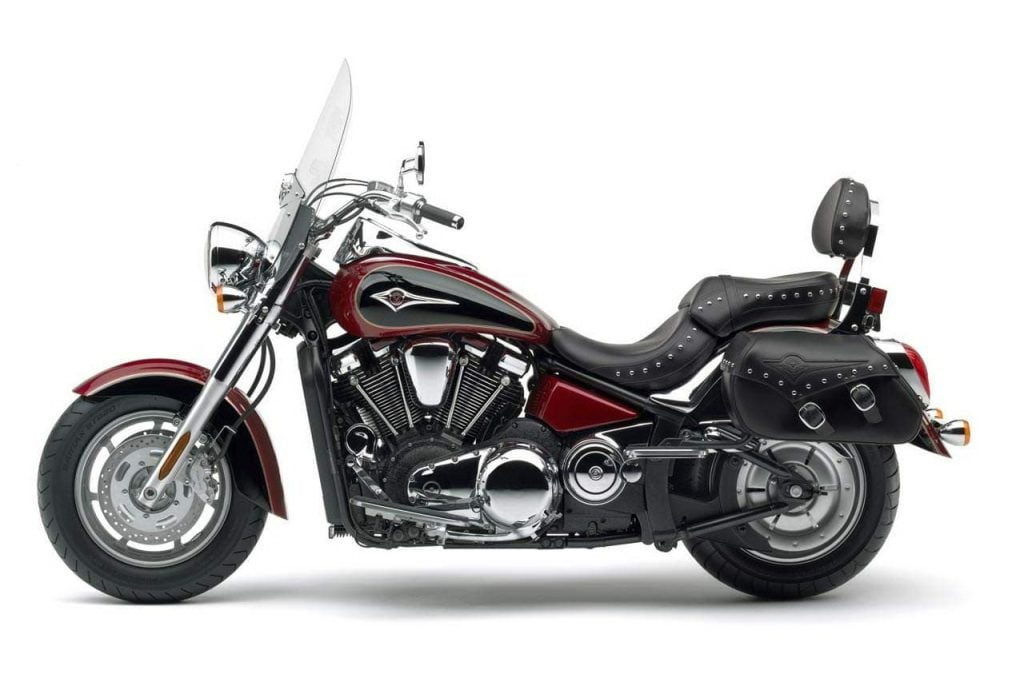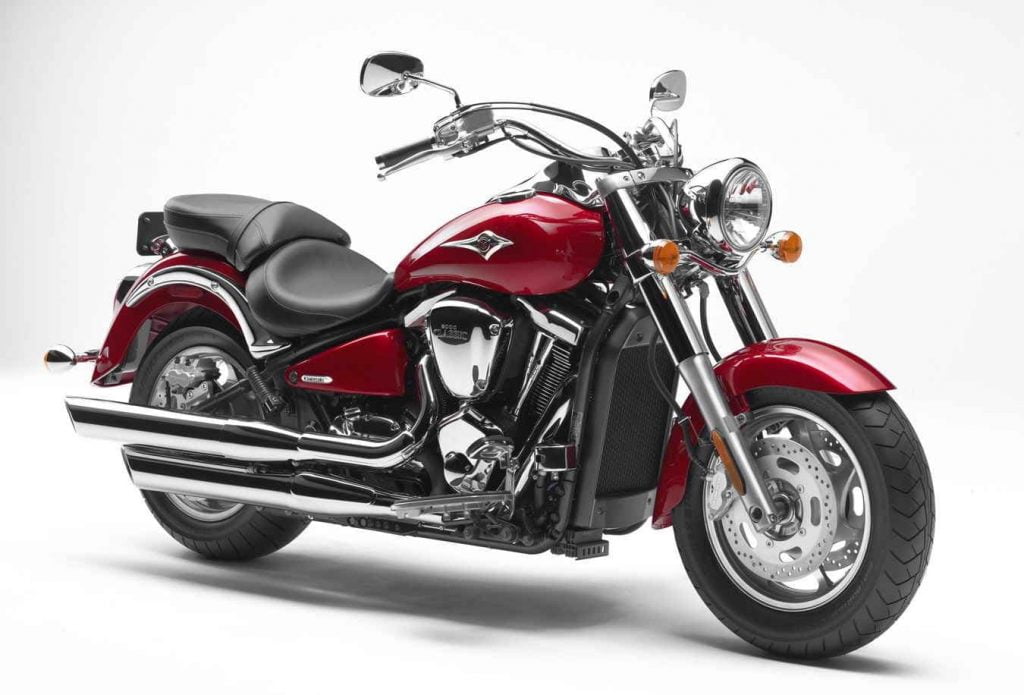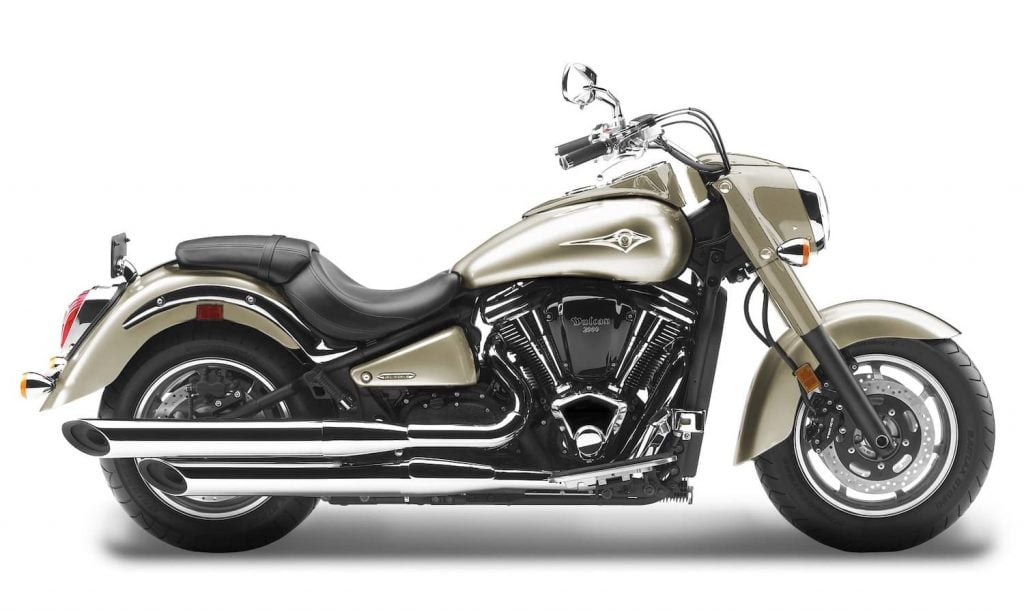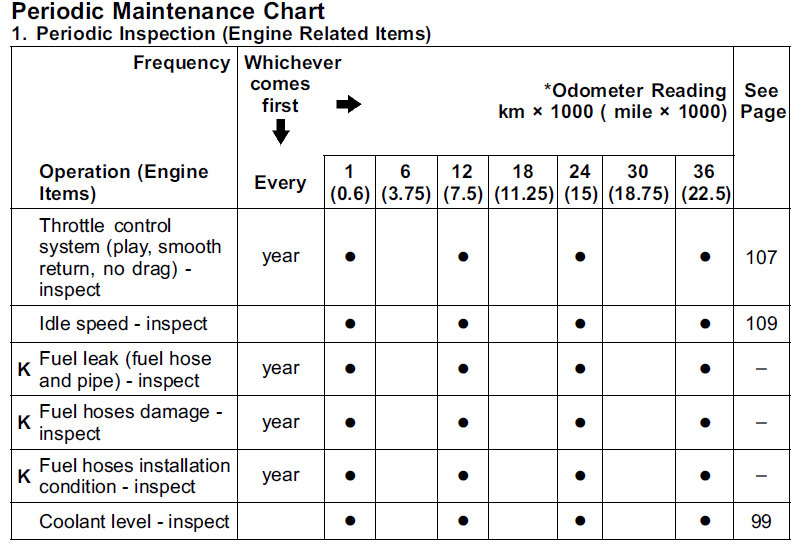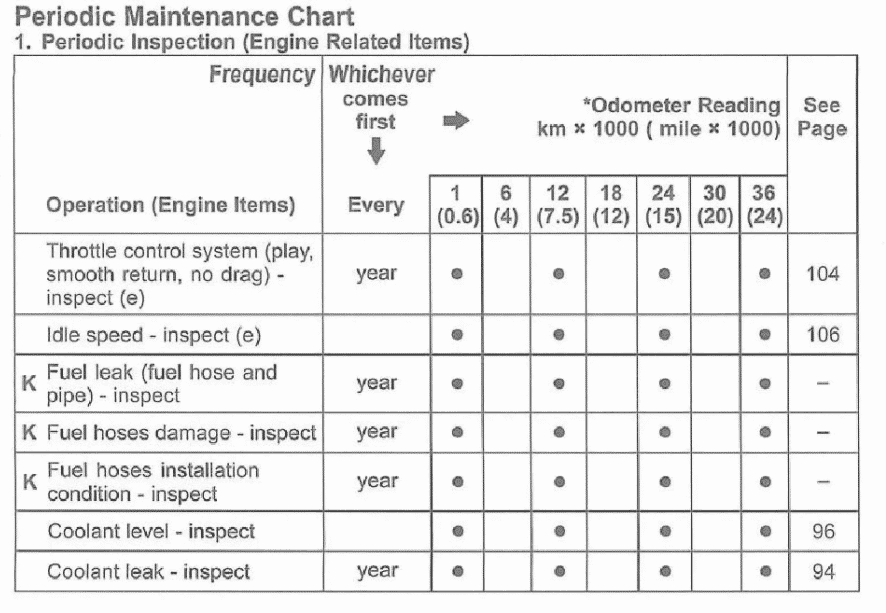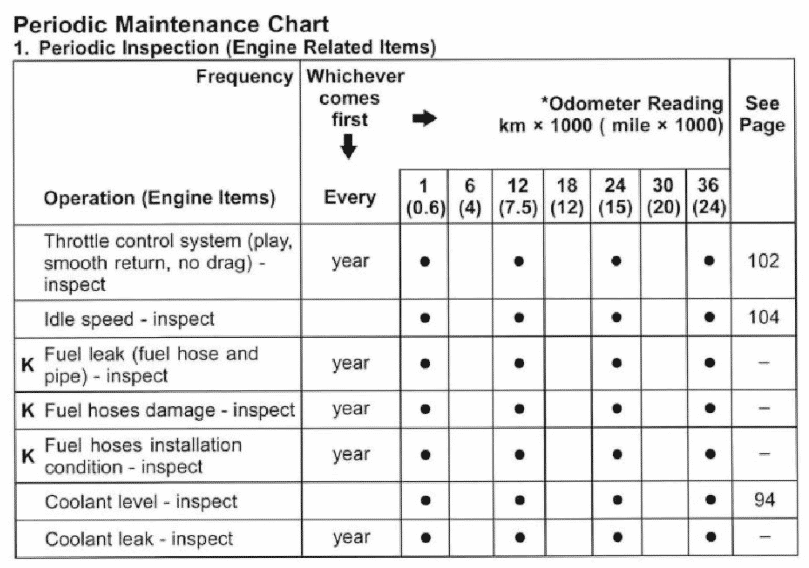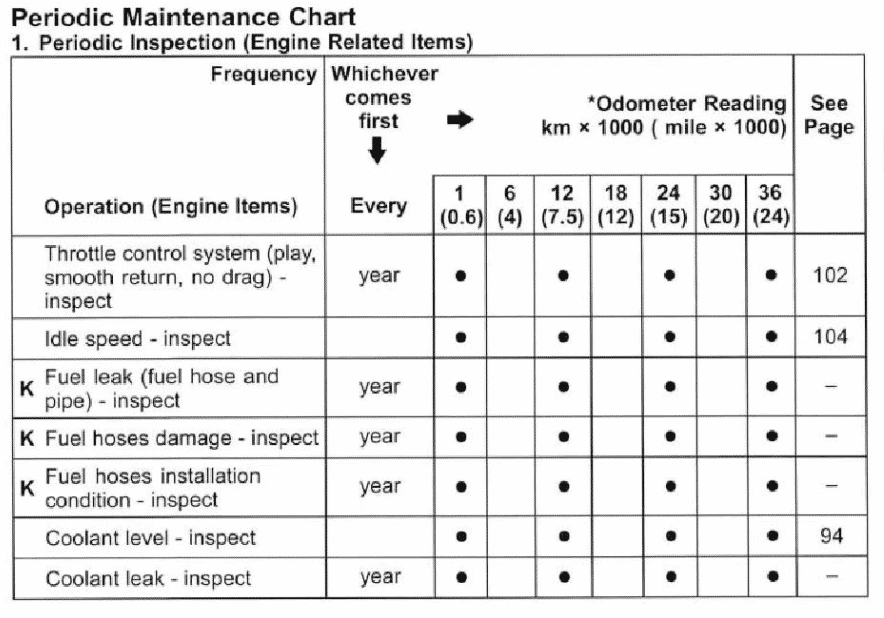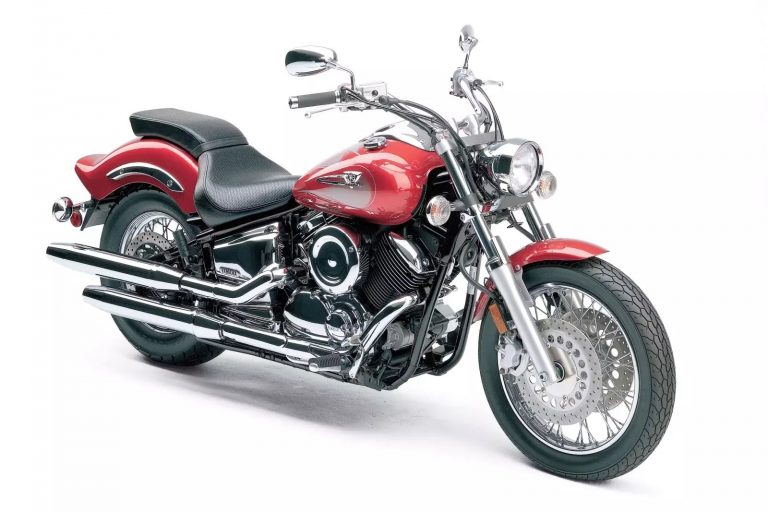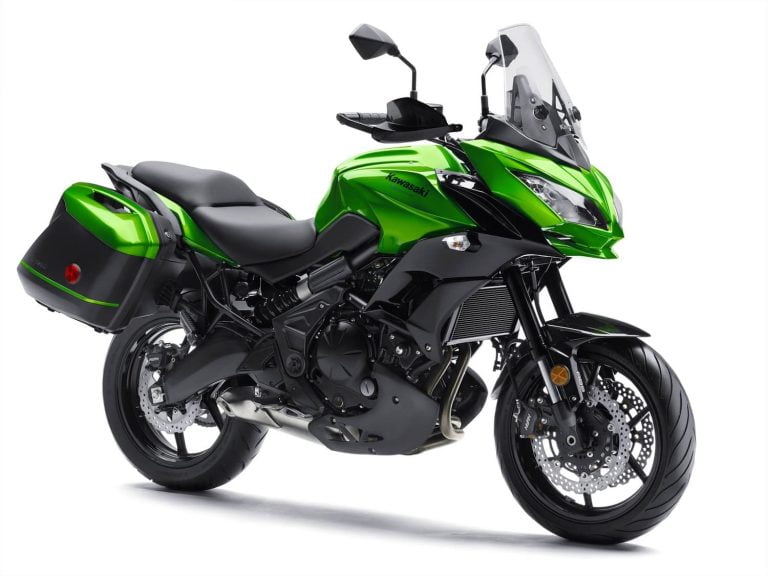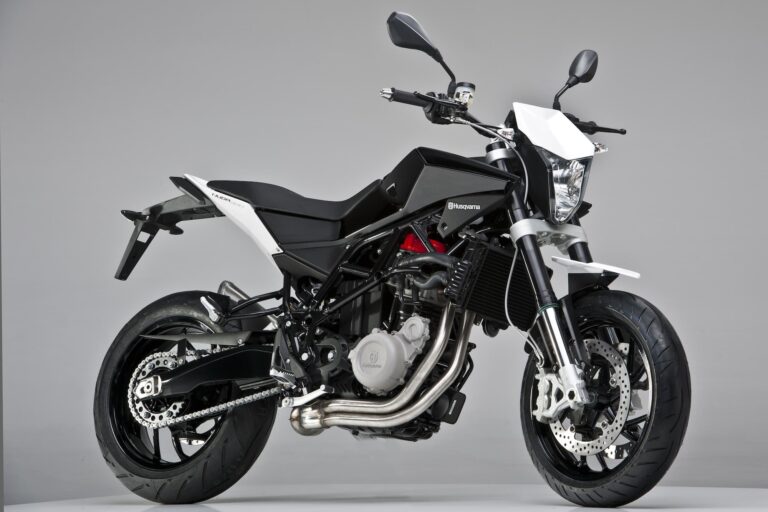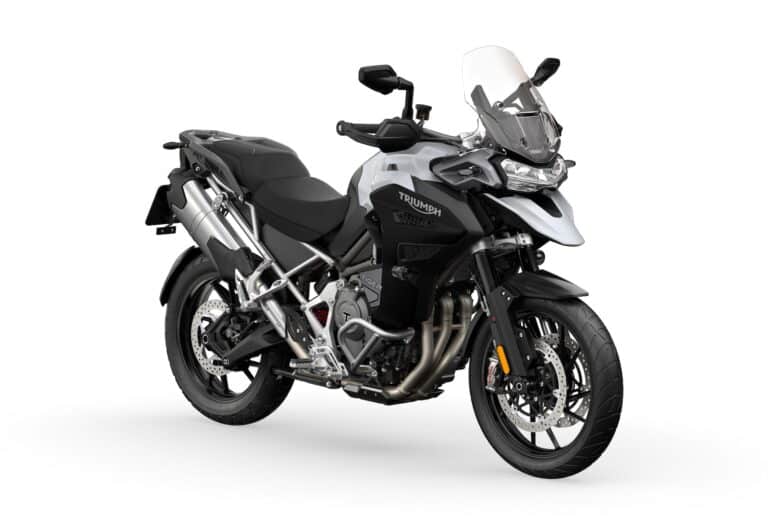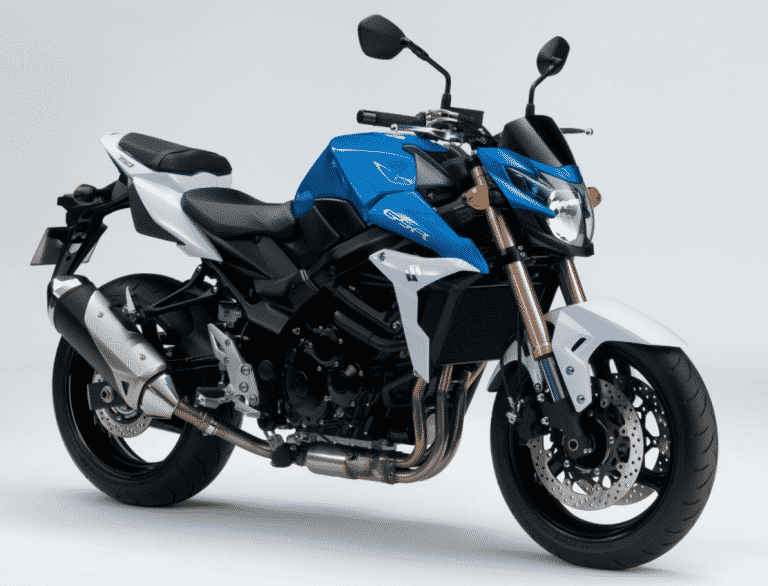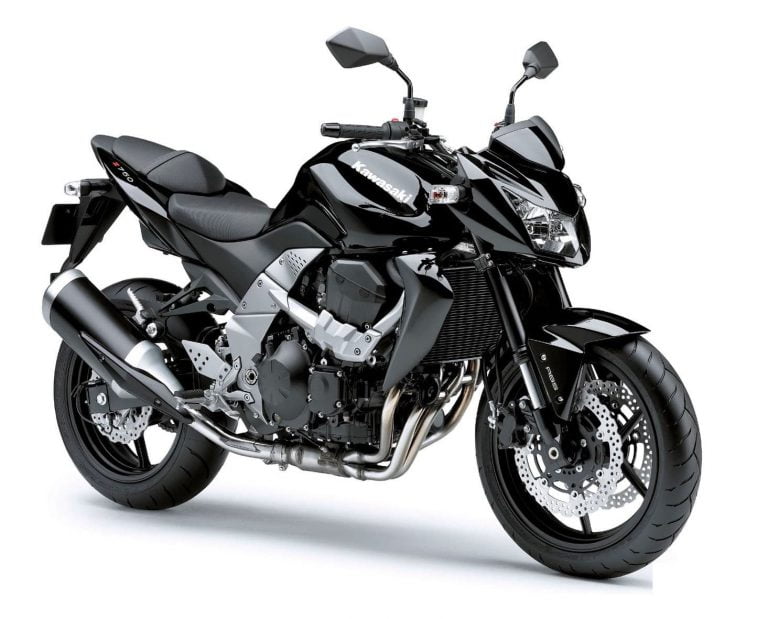Kawasaki Vulcan 2000 (Classic, LTD, 2004-2010) Simplified Maintenance Schedule and Service Intervals
This is the maintenance schedule with associated service intervals for the Kawasaki Vulcan 2000 motorcycles, released as the Vulcan 2000 Classic and the Vulcan 2000 LT. Both also go by the short product code VN2000.
The Kawasaki Vulcan is a cruiser style motorcycle. The Vulcan name has been used for custom or cruiser motorcycles since 1984, model designation VN, using mostly V-twin engines ranging from 125 to 2,053 cc.
The VN2000 was kind of an evolution of the previous Vulcan 1600, but it was short lived. The Vulcan 1700 was the truer successor to the VN1600.
The Kawasaki Vulcan 2000 Classic is powered by a 2053 cc (125 ci) 52-degree V-twin engine. It makes a frankly ridiculous 191 Nm (141 lb-ft) of torque at 3000 rpm, and commensurate power (but cruisers are all about torque!).
The Vulcan 2000 puts all that to the ground through a five-speed transmission and a belt drive — contrasting with the shaft drive of the Vulcan 1600. (The 1700 has a belt drive, too, as well as a six-speed transmission).
The Classic LT had an appearance similar to the Classic but added saddlebags, windshield, passenger floorboards, and passenger backrest to the offering.
This site has links from which we earn a commission (which unfortunately nobody can save, not even us). If you appreciate this research work, then please use those links. Thanks.
Service Intervals for the Kawasaki Vulcan 2000
The Kawasaki Vulcan 2000 has service intervals of 7500 miles or 12000 km or one year for most major items, including changing the oil and filter and doing a safety inspection of most items.
A small number of items should be checked more regularly, like the condition of the brakes and drive belt.
Because the Kawasaki Vulcan 2000 is liquid-cooled, make sure you change the coolant on schedule. Kawasaki recommends changing it every 3 years or 24000 miles / 36000 km, whichever comes earlier.
The spark plug replacement schedule is a wide 30000 miles / 48000 km. There’s no valve service interval as the Vulcan 2000 has self-adjusting valves.
Maintenance Schedule for Kawasaki Vulcan 2000
Below is the maintenance schedule for the Kawasaki Vulcan 2000 Classic.
The following is the list of maintenance operations and to be done on this motorcycle with a time or distance interval — whichever comes earlier.
We split the service into two sections
- Scheduled service — the overall service schedule
- An “Inspection checklist” to be done at every service.
Notes:
- For higher odometer readings, repeat at the frequency interval established here.
- Follow the earlier of time-based or distance-based maintenance intervals
- The break-in schedule is not shown as this bike is not sold new.
Scheduled Service
Below are items to change or replace. Follow the earlier of the time-based or distance-based intervals.
| mi x 1000 | 4 | 7.5 | 12 | 15 | 20 | 24 | 30 | |
|---|---|---|---|---|---|---|---|---|
| km x 1000 | 6 | 12 | 18 | 24 | 30 | 36 | 48 | Every |
| Conduct annual inspection checklist (see below) | ✓ | ✓ | ✓ | Year | ||||
| Engine oil — Change | ✓ | ✓ | ✓ | Year | ||||
| Oil filter — Change | ✓ | ✓ | ✓ | Year | ||||
| Air filter — Change | ✓ | ✓ | ||||||
| Spark plugs — Inspect | ✓ | ✓ | ||||||
| Spark plugs — Replace | ✓ | |||||||
| Fuel hoses — Change | ✓ | 4 years | ||||||
| Coolant — Change | ✓ | 3 years | ||||||
| Radiator hoses and O-rings — Change | ✓ | 3 years | ||||||
| Brake hoses — Change | ✓ | 4 years | ||||||
| Brake fluid (front and rear) — change | ✓ | ✓ | 2 years | |||||
| Rubber parts of master cylinder and caliper — Change | ✓ | 4 years | ||||||
| Steering stem bearings — Lubricate | ✓ | ✓ | 2 years | |||||
| Swing arm pivot – lubricate | ✓ | ✓ | ||||||
| Clutch operation (play, engagement, disengagement) – inspect | ✓ | ✓ | ✓ | |||||
| Tire tread wear, abnormal wear – inspect | ✓ | ✓ | ✓ | |||||
| Drive belt deflection – inspect | ✓ | ✓ | ✓ | ✓ | ✓ | ✓ | ✓ | |
| Drive belt wear- inspect | ✓ | ✓ | ✓ | ✓ | ✓ | ✓ | ✓ | |
| Brake pad wear – inspect | ✓ | ✓ | ✓ | ✓ | ✓ | ✓ | ✓ | |
| Brake fluid level – inspect | ✓ | ✓ | ✓ | ✓ | ✓ | ✓ | ✓ | 6 months |
| Evap emission system — inspect (if fitted) | ✓ | ✓ | ✓ |
Annual inspection checklist
Below is the full list of things to do at the annual inspection for the Kawasaki Vulcan 2000.
| Vulcan 2000 Annual Inspection Checklist |
|---|
| Throttle control system (play, smooth return, no drag) – inspect |
| Idle speed – inspect |
| Fuel leak (fuel hose and pipe) – inspect |
| Fuel hoses damage – inspect |
| Fuel hoses installation condition – inspect |
| Coolant level – inspect |
| Coolant system condition (leaks, cracks) – inspect |
| Radiator hose damage – inspect |
| Radiator hoses installation condition – inspect |
| Air suction system damage – inspect |
| Tire air pressure – inspect |
| Wheels/tires damage – inspect |
| Wheel bearings damage – inspect |
| Brake fluid leak – inspect |
| Brake hoses damage – inspect |
| Brake hose installation condition – inspect |
| Brake operation (effectiveness, play, drag) – inspect |
| Brake light switch operation – inspect |
| Front forks/rear shock absorber operation (damping and smooth stroke) – inspect |
| Front forks/rear shock absorber oil leak – inspect |
| Steering play – inspect |
| Lights and switches operation – inspect |
| Headlight aiming – inspect |
| Side stand switch operation – inspect |
| Engine stop switch operation – inspect |
| Chassis parts – lubricate |
| Bolts and nuts tightness – inspect |
Drive belt maintenance
Kawasaki recommends checking drive belt deflection and condition at every 3500 mile service. They say you should take it to a dealer to check.
However, it’s easy to check these, as described in the service manual.
You need:
- A jack to jack up the rear wheel
- A belt tension tool
- A ruler
- A new cotter pin
- Find the spot between the front and rear pulleys (it doesn’t have to be exact)
- Push down with 10 lb of force — equivalent to 45 N, or 4.5 kgf. Use a belt tension gauge, which is calibrated to do this.
- For a used belt, deflection should be 2.5-4mm (0.10-0.16 in.). For a new belt it should be at the tighter end of this.
- If the deflection is out of spec, adjust it.
To adjust the tension, you will need to do the following.
- Remove the muffler and the upper belt cover.
- Remove the axle cotter pin, and loosen the axle nut.
- Lift the rear wheel off the ground using a jack and jack attachment.
- Loosen the left and right belt adjuster locknuts. Turn them in evenly until the belt has the correct amount of deflection.
Keep the belt aligned. The notch on the left belt adjuster should align with the swingarm mark that the right belt adjuster aligns with.
- Tighten belt adjuster nuts firmly.
- Tighten the rear axle nut with a torque wrench — 80 ft-lb or 108 Nm.
- Insert a new cotter pin.
Tire size and tire pressure for the Kawasaki Vulcan 2000
The Kawasaki Vulcan 2000 has the following tire sizes and pressures standard. It runs tubeless touring tires.
| Tyre | Size | Standard tire pressure |
|---|---|---|
| Front | 150/80 R16 M/C 71V | 250 kPa / 36 psi |
| Rear | 200/60 R16 M/C 79V | 290 kPa / 42 psi |
About the Kawasaki Vulcan 2000
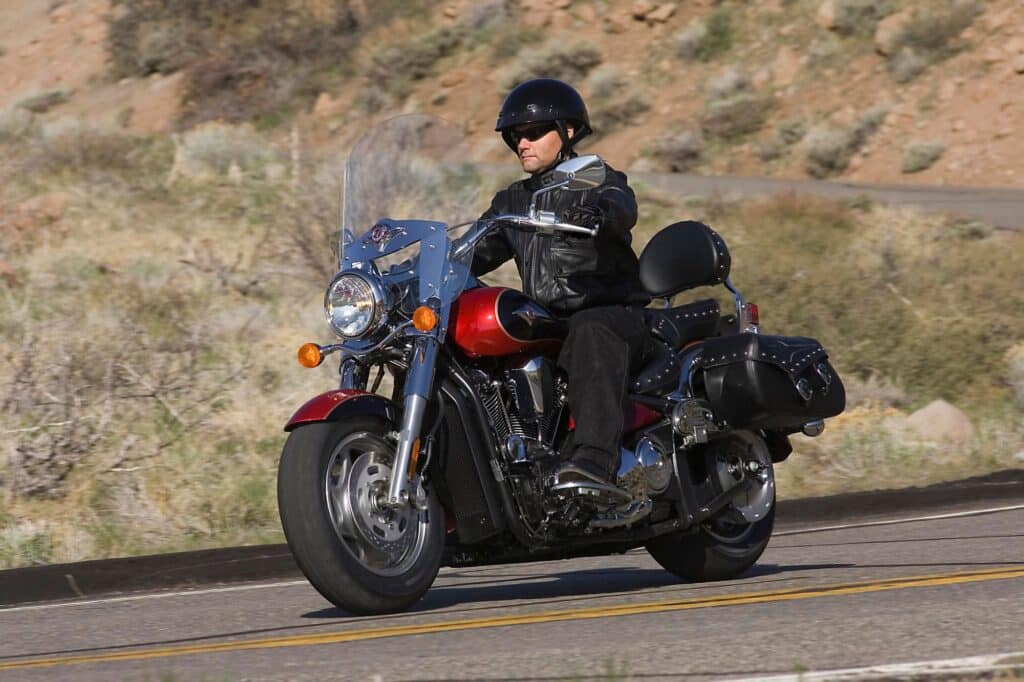
The Vulcan 2000 is a strong, stylish motorcycle. It handles well for its weight, but it’s also very heavy, so expectations can’t be that high.
The enormous 2053cc engine was at the time the largest capacity V-twin engine manufactured by a major manufacturer. To this day, it’s still one of the largest. With a massive peak of 191 Nm or 141 lb-ft of torque, the Vulcan 2000 has more torque than nearly any other motorcycle, and more than many small cars.
But despite having what seems like a ridiculous amount of pull, the Vulcan 2000 is tame and easily controlled. It won’t buck you off, or do uncontrollable burnouts.
Like many big cruisers, the Kawasaki Vulcan 2000 pulls off easily from idle, but then just doesn’t stop — it keeps pulling and pulling the more you hold the throttle open. Accelerating in higher gears shows that it doesn’t matter what gear you’re in — it all feels the same.
There are a lot of detailed additions that make the Kawasaki Vulcan 2000 seems like more than the sum of its parts. It’s not just a big cruiser.
The VN2000 is stylish, first of all. It has a traditional-style headlight, a “buckhorn” handlebar bend, a plush passenger seat for increased comfort, and several smaller details that all add to the high level of refinement. It’s comfortable, and almost… dare we say it… practical.
The Vulcan 2000 massive V-Twin cylinders have a black matte finish that contrast nicely with the cooling fins. It’s a traditional push-rod engine which means that the engine is a little lower, keeping the centre of gravity low, making the heavy bike easier to control.
The fuel injection is quite advanced, given that it has a classic cruiser. The Kawasaki Vulcan 2000 has sub-throttle valves and fine atomizing injectors, which help the Vulcan 2000 give a linear powerband and optimised fuel economy.
Front brakes are via twin 300 mm discs and four-piston calipers. The final drive is via a five-speed transmission and a belt — reliable, quiet, and low-maintenance.
It’s worth mentioning that the Vulcan 2000 doesn’t need valve service — it has self-adjusting hydraulic lifters.
Reference — Screenshots from the Manual for the Kawasaki Vulcan 2000
The above maintenance schedule comes directly from the user’s manual for the Kawasaki Vulcan 2000 Classic, which is available at Kawasaki’s website here.
The maintenance schedule for the Vulcan 2000 is the same for all models and across model years as there were no changes other than in external bolt-on parts.
